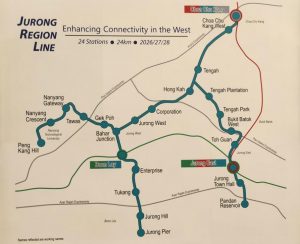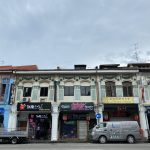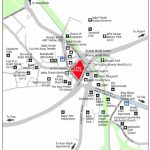Four Jurong Region Line contracts worth $682.5 million awarded by Land Transport Authority
The Land Transport Authority (LTA) has awarded four Jurong Region Line contracts at a combined value of approximately $682.5 million.
The four Jurong Region Line contracts cover the following areas:
- the construction of three JRL stations and their associated viaducts (J109);
- the provision of the signalling system and half-height platform screen doors (J152);
- the delivery of an integrated supervisory control system (J155);
- and the communications system (J160) for the JRL.

J109 – Contract for Design and Construction of Three JRL stations
The contract for the design and construction of three JRL stations and their associated viaducts has been awarded to the Daewoo Engineering & Construction Co. Ltd. – Yongnam Engineering & Construction Pte. Ltd. Joint Venture at a contract value of $320.4 million. This contract covers the design and construction of Toh Guan, Jurong Town Hall and Pandan Reservoir[1] stations and viaducts spanning 3.6 km.
Toh Guan station will serve existing residential developments along Jurong East Central, places of worship and educational institutions such as Crest Secondary School, while Jurong Town Hall station will serve commuters travelling to and from International Business Park. Pandan Reservoir station will cater to residents around Teban Gardens and West Coast Road, as well as places of worship and Commonwealth Secondary School which are adjacent to the station.
Daewoo Engineering & Construction Co. Ltd. and local contractor Yongnam Engineering & Construction Pte. Ltd. have a wealth of experience in infrastructure projects n Singapore. Daewoo is currently involved in the construction of Stevens station on the Thomson-East Coast Line while Yongnam is involved in the construction of the North-South Corridor. Yongnam was also involved in the construction of Canberra station on the North-South Line.
Construction works for the three stations under this contract are expected to start later this year. Residents and commuters who use these stations when the JRL is completed can expect to see significant time savings.
J152 – Contract for Signalling System & Half-Height Platform Screen Doors
The contract for provision of the signalling system and half-height platform screen doors for the JRL has been awarded to Siemens Mobility Pte. Ltd. –Siemens Rail Automation, S.A.U. Consortium at approximately $215.5 million. The contract includes the design, manufacture, supply, installation, testing and commissioning of the signalling system and half-height platform screen doors for the entire JRL.
The signalling system’s design is based on the Communications-Based Train Control (CBTC) signalling technology and supports fully-automated train operations. It will also be equipped with condition monitoring capabilities to support predictive maintenance over the life cycle of the system.
Siemens’ SIRIUS CBTC system is used in the Downtown Line (DTL) in Singapore and several metros around the world, including the Este in Madrid, the Marmaray Rail Tube Tunnel in Istanbul and the Metro L2 in Changsha. Siemens is also currently involved in the implementation of the signalling system and full-height platform screen doors for the DTL3 extension. It is also setting up the CBTC simulation facility for DTL.
J155 and J160 – Contracts for Integrated Supervisory Control and Communications Systems
Contracts J155 and J160 are for the provision of the Integrated Supervisory Control System (ISCS) and the Communications System, respectively, for JRL. Both contracts have been awarded to ST Engineering Electronics Ltd (STEE) at an approximate combined value awarded of $146.6 million.
The ISCS is an integral part of efficient rail operations as it provides the basic framework to enable a rail line’s Operation Control Centre, Depot Control Centre and Passenger Service Centre to remotely supervise and control other electrical and mechanical systems and services, as well as civil equipment.
The communications system for the JRL comprises sub-systems such as the communications backbone network, digital trunked radio, video surveillance, public address, telephone and travel information systems. This system is critical to ensure the safe and efficient operation of a fully-automated train system.
STEE has a proven track record and a strong presence in the rail market in Singapore. It is currently involved in the implementation of ISCS and communications systems for Circle Line 6 and DTL3 extension projects.
Mr Paul Ho, chief mortgage officer at iCompareLoan said, “with the four Jurong Region Line contracts awarded the Jurong Lake District project looks even more promising.”
Developments for the Jurong Lake District are centered around the Jurong East MRT station. With established businesses around the MRT station – like the International business park, IMM (a major shopping mall), along with other new shopping malls, a hospital, educational hubs, high rise offices and residential units.
The upcoming seventh MRT line, Jurong Region Line, is expected to lift the fortunes of not just the properties in Jurong Lake District, but also the real estate in Boon Lay and Choa Chu Kang. The new line will serve the Jurong area and the western part of Singapore. Jurong Region Line will connect residents in Choa Chu Kang, Boon Lay and the Tengah New Town, and will also connect the Nanyang Technological University (NTU), the Jurong Industrial Estate and the new Jurong Innovation District.
It will relieve pressure on the crowded Jurong East Interchange Station by directly connecting the north to the Jurong region via a new Jurong Region Line interchange station at Choa Chu Kang. The Jurong Region Line will be developed to support the Government’s urban decentralisation strategy, and car-lite policy.
The Minister previously said that the Jurong Region Line project marks a quantum leap in the Government’s improvement of transport infrastructure for Jurong. The Jurong Region Line project will be 24km long with 24 stations, and will run above-ground. It will open in three phases, starting from 2026. The Jurong Region Line will give commuters route choices.






